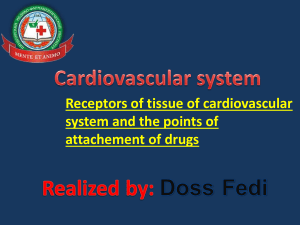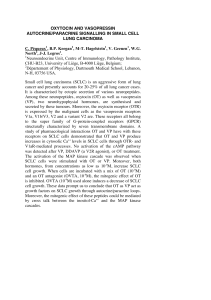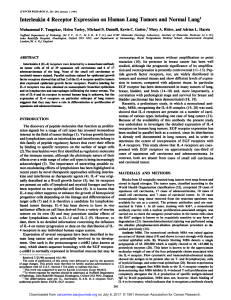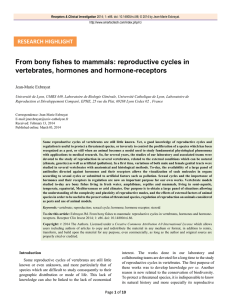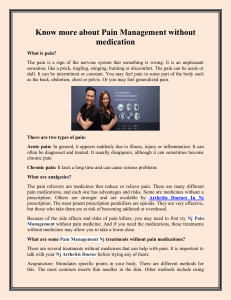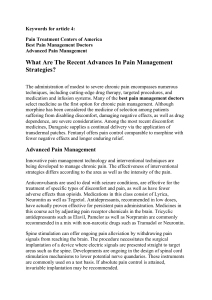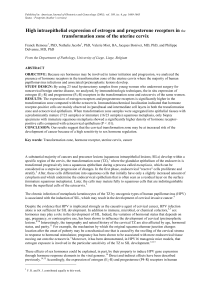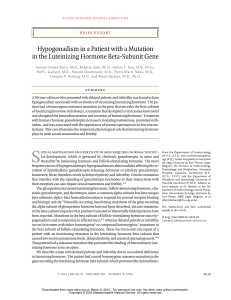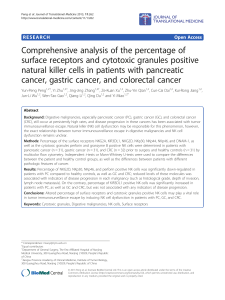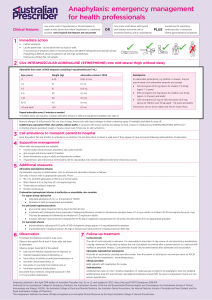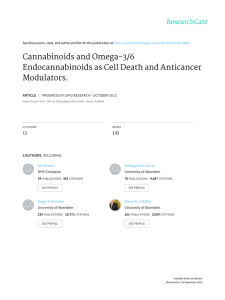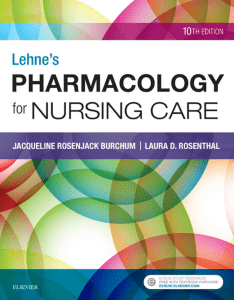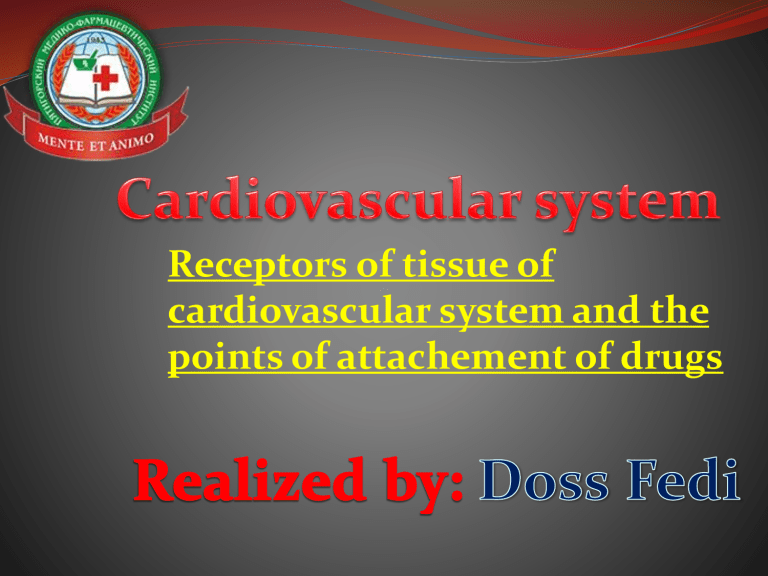
Receptors of tissue of cardiovascular system and the points of attachement of drugs cardiovascular tissue alpha-adrenergic reseptors Beta-adrenergic reseptors cardiovascular tissue: Cardiovascular tissue has an important role in circulating blood for the transport of oxygen, carbon dioxide, nutrients, blood cells, and hormones, to maintain the homeostasis of human body, In particular, vascular grafts with nanostructured surfaces can promote cell adhesion and proliferation Cardiac muscle tissue is an extremely specialized form of muscle tissue that has evolved to pump blood throughout the body. In fact, cardiac muscle is only found in the heart and makes up the bulk of the heart's mass. Alpha receptors are the cell receptors that control physiological processes like vasocontruction,intestinal relaxation,pupil dilation upon interaction with adrenaline There is tow types alpha 1 and alpha 2 Methoxamine is an exemple of alpha 1 agonist while clonidine is an an example of a alpha 2 agonist Alpha-1 agonists: agonists have been used primarily as pharmacological reagents. They are currently used therapeutically primarily as local vasoconstrictor agents. These are: phenylephrine, methoxamine, midodrine They induce the effects of stimulation of alpha 1 adrenergic receptors. Administered intravenously, they increase in blood pressure secondary to the vasoconstrictor effect. Alpha 2 receptors: Alpha 2 receptors in the brain stem and in the periphery inhibit sympathetic activity and reduce blood pressure. Alpha 2 receptor agonists such as clonidine or guanabenz reduce central and peripheral sympathetic overflow and via peripheral presynaptic receptors may reduce peripheral neurotransmitter release. alpha2 agonist: The main alpha 2 agonist substance used in therapy is clonidine It reduces blood pressure by reducing central sympathetic tone and reduces heart rate by simultaneous stimulation of para-sympathetic tone Stimulation of post-synaptic vascular alpha 2 adrenergic receptors potentially induces vasoconstriction and increased blood pressure Alpha1 blockers: alpha2 blockers: •Prazosin Yohimbine •Terazosin Idozoxan •Doxazosine •Alfuzosin&Bunazosin •Tamsulosin&Silodosin Beta receptors are a group of receptors that control vasodilation,relaxation of the bronchial and uterine smooth muscles,and increase heart rate The beta-adrenergic receptors beta 1 and 2 are seven transmembrane receptors coupled to the adenyl cyclase of a G protein. Their stimulation induces the formation of cyclic AMP (from ATP), second messenger. which activates protein kinase A There is 3 types beta 1,beta 2 and beta3 Beta 1 and 2 agonists: isoprenaline, adrenaline Beta 1 agonist: dobutamine, noradrenaline, dopamine Preferential beta 2 agonists: salbutamol, terbutaline, salmeterol Beta 1 receptors: Beta 1 receptors are located in the heart. When Beta 1 receptors are stimulated they increase the heart rate and increase the heart's strength of contraction or contractility. its effects cardiac stimulant: inotropic, chronotropic, dromotropic and positive bathmotropic effects Acceleration of cardiac relaxation ↑ lipolysis (stimulates the lipase of triglycerides) ↑ Secretion of renin by the juxta-glomerular apparatus Beta 1-adrenergic agonists: Beta-adrenergic agonists such as isoprenaline, dobutamine, noradrenaline and adrenaline are substances with a primary amine function in their structure, preventing practically any intestinal resorption and passage of the blood-brain barrier. The beta 2 receptors: The beta 2 receptors are located in the bronchioles of the lungs and the arteries of the skeletal muscles Cardiac stimulant (non-predominant but present receptors) ↑ release of Noradrenaline from sympathetic fibers Relaxation of smooth fibers: vessels, bronchi, uterus, intestine. ↑ hepatic glycogenolysis ↑ hepatic neoglycogenesis ↑ muscle glycogenolysis ↑ insulin (low) ↓ serum potassium by stimulation of an NA + / K + pump ↑ tremor extremities (mechanism discussed, central or peripheral origin) The beta 2 agonist: The beta 2 agonist substances can be administered orally because resorbed by the digestive tract. Their elimination half-life may be longer, especially with salmeterol (6 hours on average). They can also be administered by air (aerosols) .This route of administration particularly used during the treatment of asthma allows for some of them (salbutamol, terbutaline) an immediate and prolonged action and reduces the amount of agonist passing into the systemic circulation beta blockers: beta blockers, are medications that reduce your blood pressure. it work by blocking the effects of the adrenaline. When you take beta blockers, your heart beats more slowly and with less force, thereby reducing blood pressure. They antagonize the effect of the stimulation of either of the two types of beta 1 and 2 adrenergic receptors, or preferentially beta 1 adrenergic receptors (so-called cardi-selective beta-blockers). difference between alpha and beta receptors: Alpha receptors are mostly involved in the stimulation of effector cells and constriction of blood vessels. On the other hand, beta receptors are mostly involved in the relaxation of effector cells and dilatation of blood vessels.
